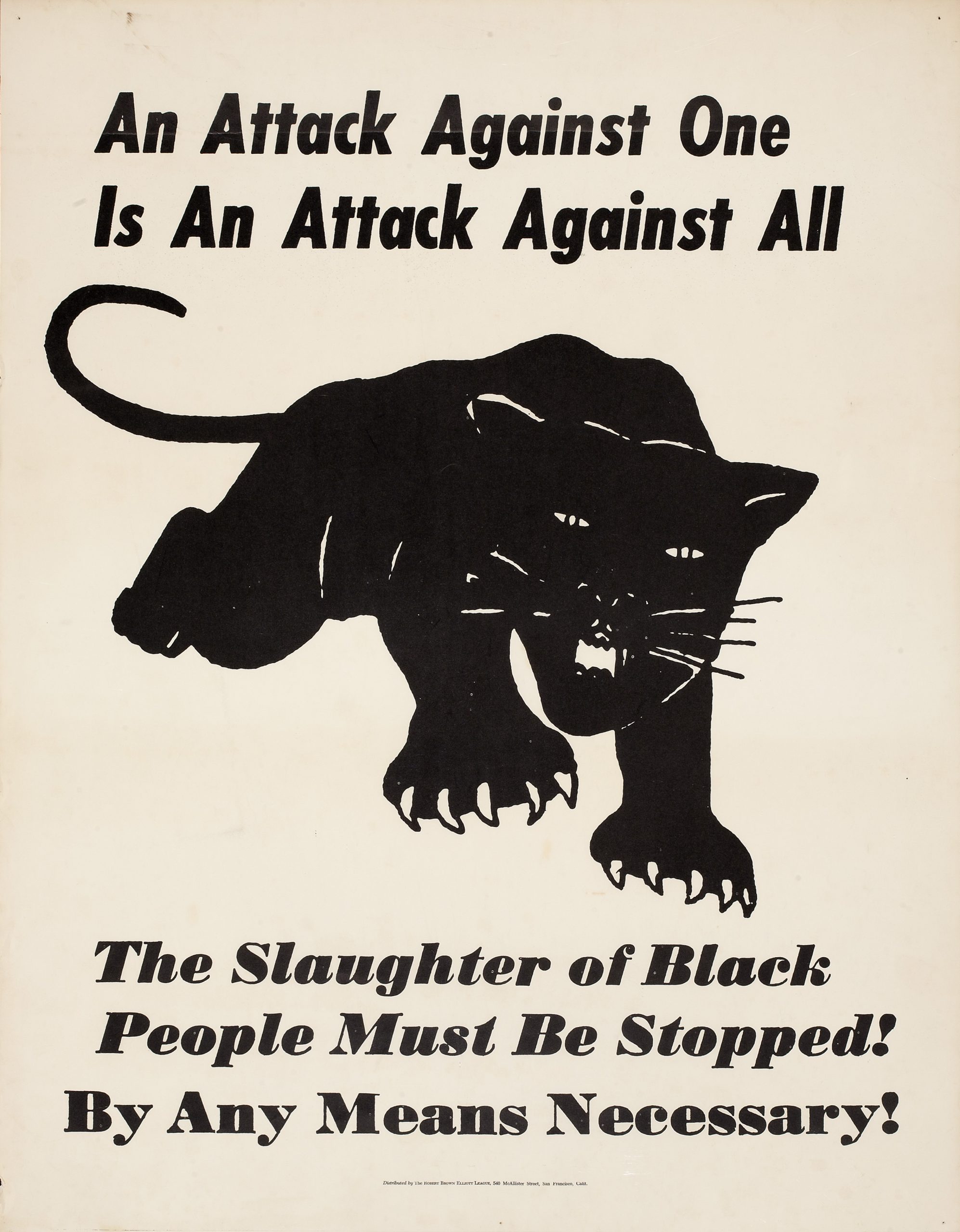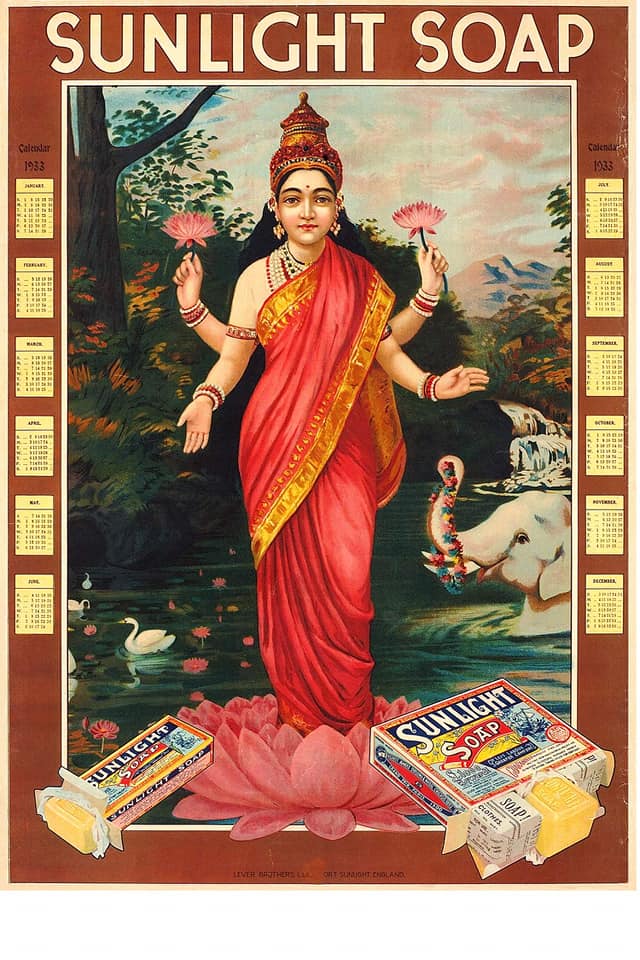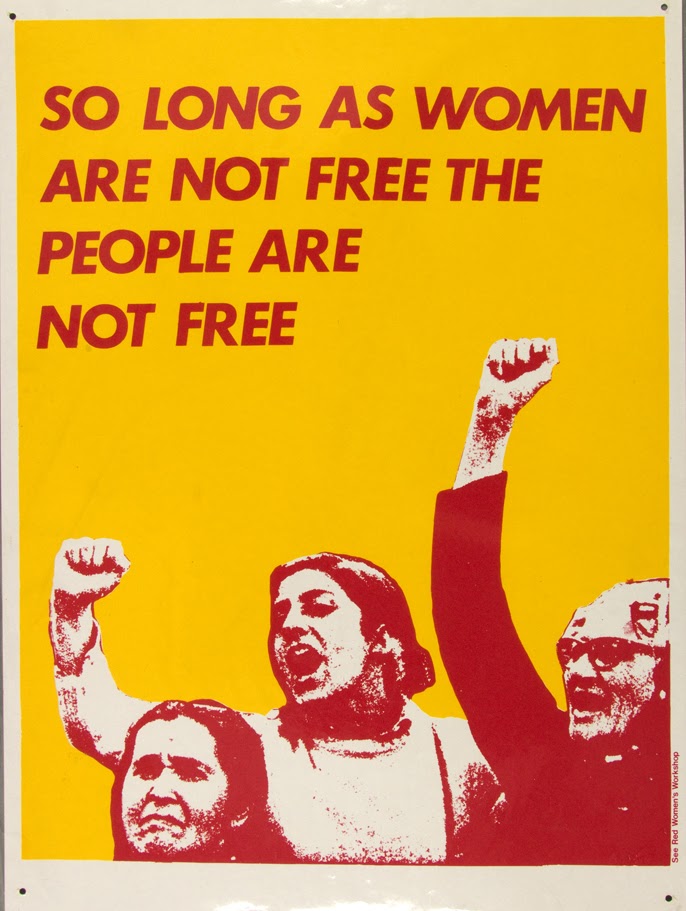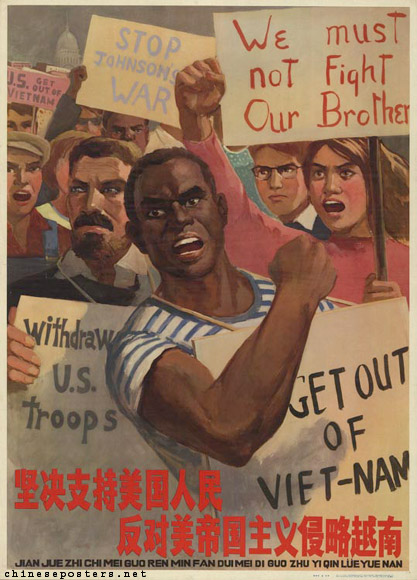
The Civil Rights Movement in China
Ruoyi Jiang is the founder and director of Chop Suey Club, a concept store in downtown NYC focused on contemporary Chinese design, art, and culture. Her goal is to dissipate xenophobia by making Chinese culture more accessible to others, and to open up contemporary Chinese culture to a larger audience.
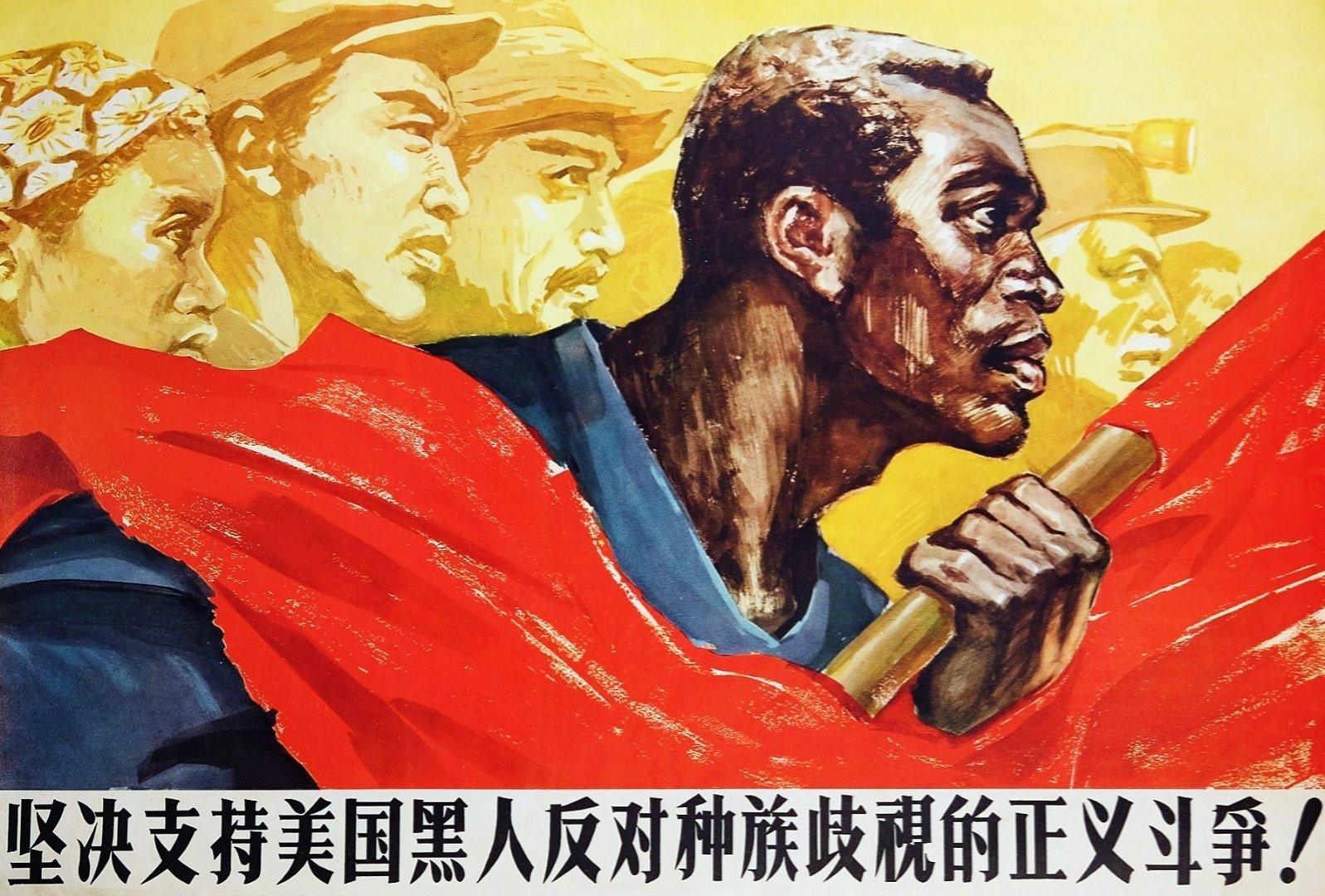
Resolutely Support Black Americans’ Righteous Struggle Against Racial Discrimination, Designer Unknown, c. 1968
Image: Twitter
Twelve days following Dr. Martin Luther King Jr.’s assassination on April 4, 1968, Chairman Mao published a statement on the People’s Daily front page, calling for armed resistance by African Americans, Vietnamese, and all proletarians to unite and overthrow U.S. imperialism. The proclamation was titled “Statement of Comrade Mao Tse-tung, Chairman of the Central Committee of the Communist Party of China, In Support of the Afro-American Struggle Against Repression.”

Statement of Comrade Mao Tse-tung, Chairman of the Central Committee of the Communist Party of China, In Support of the Afro-American Struggle Against Repression, Designer Unknown, 1968
Image: Cornell University
In strong revolutionary language, Mao argued that Dr. King’s violent death should be a profound lesson for African Americans: that liberation from violence cannot be achieved by non-violence and that they must fight back with force. Mao also suggested that the African American struggle was the product of colonialism and imperialism; that racial conflict is, in fact, a distraction to disguise the real issue of class struggle. Therefore, the real goal should be overturning the monopoly of capitalism that is at the root of all of these problems.
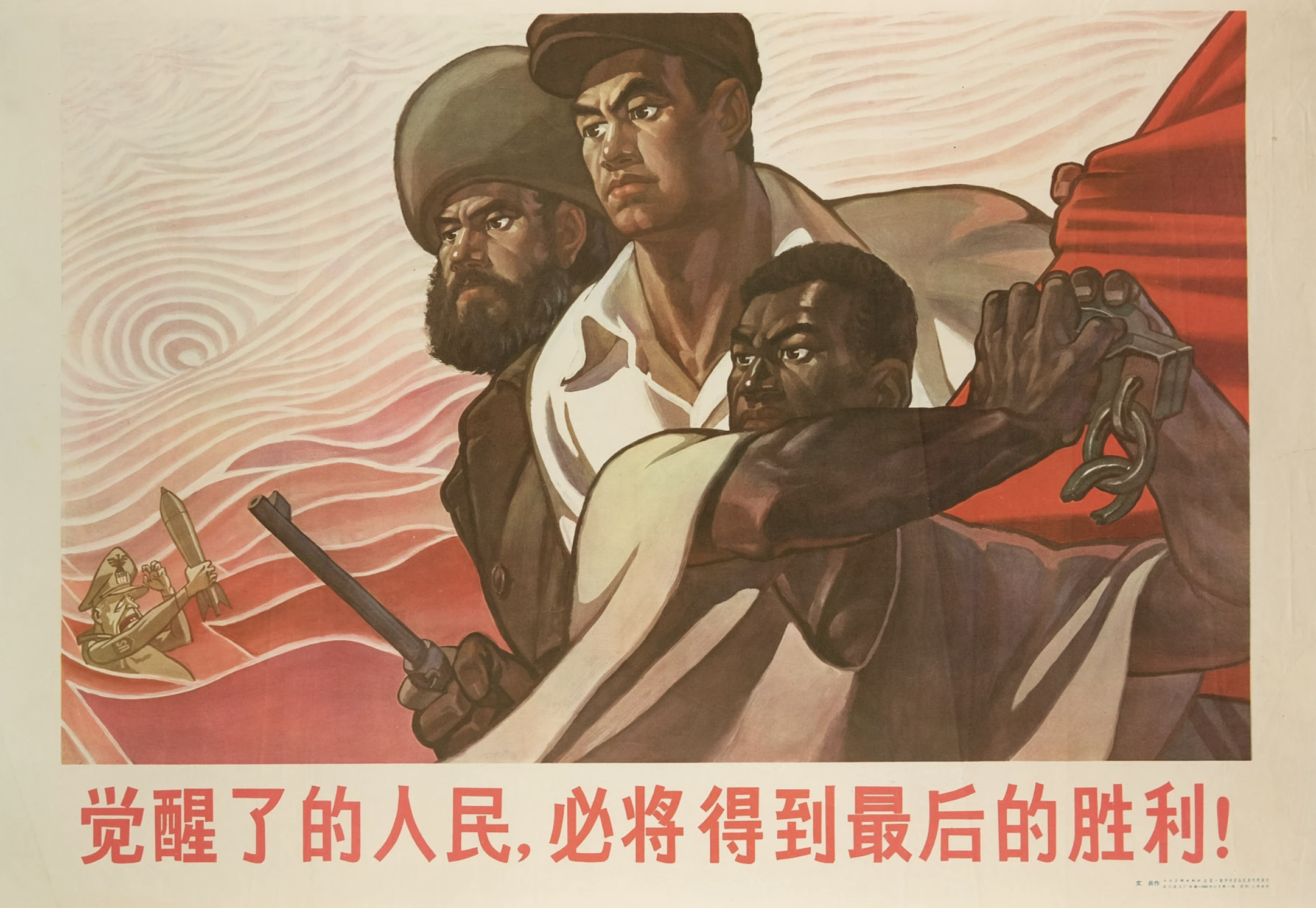
The Peoples Who Have Awoken To The Truth Will Inevitably Gain The Final Victory!, Wen Bing, 1962
Image: East Red Gallery
This brief yet emphatic statement was immediately reproduced as a poster with a map showing 50+ U.S. cities marked by red torches where riots had occurred. The text is in a red Kai font, underlined entirely like it was in the original newspaper printing. The map contains six additional text call-outs that provide details of the riots in Kansas City, Memphis, Baltimore, Washington D.C., Chicago, and Pittsburgh. These highlighted areas describe intense fighting in revolutionary terms consistent with the Chinese Communist Party’s standard propaganda.
This notice also marked the second time Chairman Mao had issued an official statement in support of the African American struggle. The first was published in 1963 as a result of meeting Civil Rights leader Robert William in China. African American suffrage was then seen as analogous to the oppression all proletarians face in the world.

Resolutely Support the American People in Their Resistance Against American Imperialist Aggression in Vietnam, Cao Youcheng & Meng Guang, 1966
Image: Chineseposter.net
While Mao’s statements voiced solidarity with the Black Power movement, they were really written to gather broader support from fellow Communist countries to help reclaim China’s seat at the United Nations as the new People’s Republic of China. As the Soviet Union and China were competing to be the leader of Communism, the U.S. was trying everything to counter Communist influence domestically and internationally. Meanwhile, visual representation of international ethnic unity became more prevalent in Chinese propaganda posters with the graphic appearance of Africans, Eastern Europeans, Vietnamese, and Cubans becoming commonplace. Eulogizing the heroic struggle of Black people for freedom and equality as a means of condemning U.S. imperialism became mainstream in Chinese propaganda, of which “armed resistance” remained a vital concept throughout.
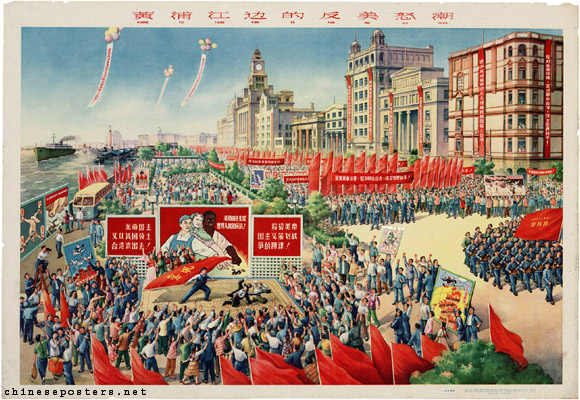
Waves of Anger Along the Bund, Zhang Yuqing, 1961
Image: Chineseposters.net
Eventually in 1972, the People’s Republic of China won its seat back at the United Nations thanks to Albania’s proposal. Domestically, though, China was in the chaotic midst of the Cultural Revolution—a violent mass movement initiated by Chairman Mao in 1966 to eliminate his political opponents at every level of government.
People eventually fell into two factions—those who backed Mao’s purging to overthrow the “anti-
revolutionary” authorities (“Leftists 左派”) and those who backed the establishment (“Rightists 右派”). Mao encouraged “Violent Struggle 武斗” to resolve this standoff and demanded that the People’s Liberation Army (PLA) support the Leftist radicals. Millions of firearms, ammunition, and artilleries went into the hands of this faction, leading to intense violence. Most cities in China erupted in massive armed conflicts. While not all PLA branches obeyed Mao’s direction, all those who received the army’s support succeeded in decimating the “enemy.”
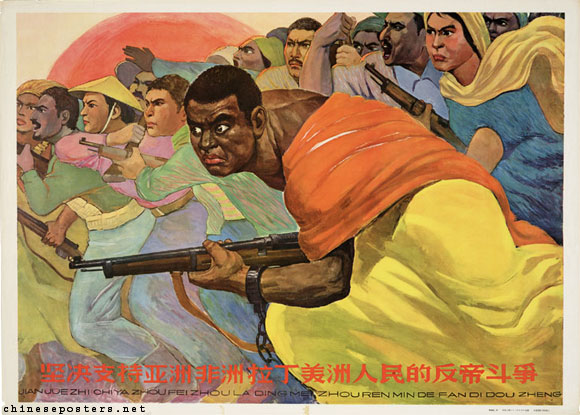
Resolutely Support the Anti-Imperialist Struggles of the people of Asia, Africa and Latin America, Zhou Ruizhuang, 1967
Image: Chineseposters.net
Meanwhile, back in the United States, many Black Power leaders influenced by Mao’s revolutionary theories also believed that non-violence was only a tactic, not a resolution. Armed resistance had shown particular effectiveness in Confederate states where situations were most brutal, further propelling armed groups like the Black Panther Party to form. The Black Panther Party actually raised some of their initial funds for guns by selling Mao’s Little Red Book at U.C. Berkley.
When Martin Luther King Jr. was killed, riots broke out in more than 125 cities across the United States. One week later, the Fair Housing Act passed, prohibiting discrimination concerning the sale, rental, and financing of housing based on race, religion, and national origin. The passage of this legislation was a hard-earned win for the Civil Rights movement. Nevertheless, it has failed to be enforced effectively since its inception, with much of the middle-and-lower financial classes subject to convoluted social-financial practices and regulations.

Power Rally to Free Huey Newton in San Francisco California in May, 1969
Although written with different political intent, both of Mao’s published statements placed the struggle of Black Americans within our contemporary understanding of systemic racism and modern colonialism. Many anti-segregation initiatives, education and healthcare reforms, and social services have remained largely segregated and unequal to this day. New financial and legal peonage has come into place that has maintained if not furthered the wealth gap between White and Black Americans. The War on Drugs, zero-tolerance policing, minimum sentencing, and increased funding for policing and prisons have all been exposed as unfairly targeting minority communities while enriching banks, corporations, and the prison industrial complex. At this very moment, people are demanding a systemic value change in both legislative and private sectors comparable to those that Mao touted.

Black Lives Matter, Designer Unknown, 2017
Image: Poster House Permanent Collection
Today, as the American people are standing up against their government and asking for a fundamental shift in values—a real “cultural revolution”—older Chinese people are surely reminded of their own brutal revolutionary experiences under Mao’s oppressive government. Drawing a comparison between the Cultural Revolution and the Civil Rights movement is not to say they are equal, but to remind us that those in power can co-opt a well-intended and righteous movement for self gain.
Very often, our good intentions, energy, and efforts (like protesting) can be manipulated by others to benefit their interests, leaving our real goals behind in the chaos. Mao used his people’s sentiment against imperialism and their blind loyalty to boost his own political agenda, ultimately having an entire country participate in a propaganda system where the only messages you could and ought to follow were his directions. While some of these ideas are wonderful in theory, the way Mao used them turned a short-term political ideal into a gruesome ten-year purge of “dissidents.” In the end, no one remembered the intentions behind these posters, but rather focused on the millions of deaths and lives destroyed. The Cultural Revolution was partially caused by the lack of freedom of speech, but, more importantly, by people’s inability to recognize the true political intents behind such positive-looking propaganda.
Today, while the internet has allowed for more diverse voices to be heard on any given issue, it has also allowed corporations and politicians to create more effective, compelling propaganda at a moment’s notice. Glossy images and catchy slogans on posters have been transformed into memes, spreading quicker than ever to millions of willing, even gullible, eyes. Just as Chinese citizens had to learn to see beyond the posters produced under Mao that aligned the Communist Party with the Civil Rights Movement, so do we have to parse through complex and skillfully-made messaging in support of the Black Lives Matter movement to figure out if those creating the graphics are truly walking the walk or just paying lip-service for their own benefit.

